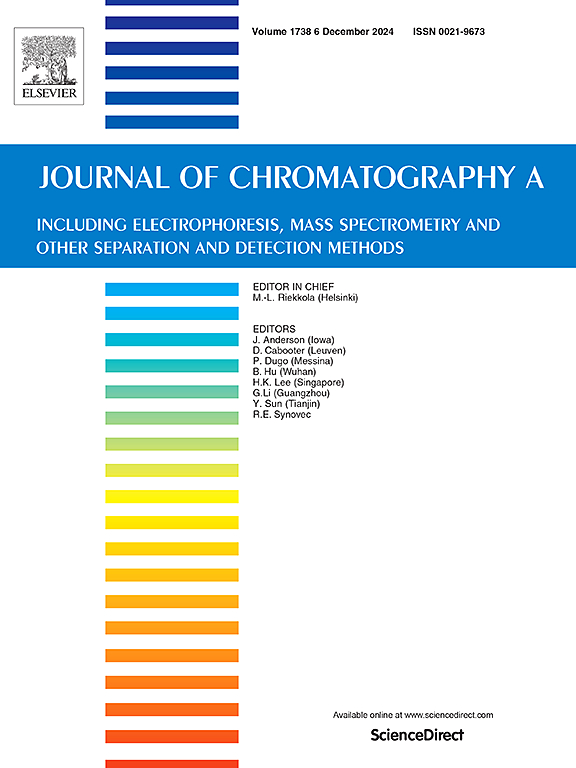亲水相互作用色谱-高分辨质谱(HILIC-LC-HRMS):研究蝰科蛇毒中天然多肽的一种方法。
IF 3.8
2区 化学
Q1 BIOCHEMICAL RESEARCH METHODS
引用次数: 0
摘要
本文章由计算机程序翻译,如有差异,请以英文原文为准。
Hydrophilic interaction chromatography coupled to high resolution mass spectrometry (HILIC-LC-HRMS): An approach to study natural peptides in Viperidae snake venom
Although proteins in snake venoms have been extensively studied and characterized, low-mass molecules remain relatively unexplored, mainly due to their low abundance, secondary role in envenomation, and some analytical technique limitations. However, these small molecules can provide new important data related to venom toxins' molecular structure, functions, and evolutionary relationships. This research aimed to characterize molecules below 10 kDa in the venoms of snakes from the Viperidae families (Bothrops, Agkistrodon, and Bitis) and compare two chromatographic approaches: reverse-phase chromatography (RP), a classic technique, and hydrophilic interaction liquid chromatography (HILIC), an alternative technique, both coupled with high-resolution mass spectrometry (HRMS). The results showed that the separation of the HILIC column provided a more efficient evenly distributed ion profile than RP, contributing to a 25.6% increase in the sequences identified. Homologous sequences for Bradykinin-potentiating peptides (BPPs) and fragments of major venom proteins, possibly cryptids, were found. In addition, BPP 13a, peptides rich in histidine and glycine (pHpG), and spacer sequences were identified in all snakes analyzed, especially with HILIC separation, suggesting that these sequences may be conserved within Viperidae. These findings indicate that the use of the HILIC column, compared to RP, is a promising approach for characterizing peptides in snake venom obtained by the ultrafiltration process. It contributes to the study of these still poorly understood molecules and is also a good option for studying other complex protein/peptide mixtures.
求助全文
通过发布文献求助,成功后即可免费获取论文全文。
去求助
来源期刊

Journal of Chromatography A
化学-分析化学
CiteScore
7.90
自引率
14.60%
发文量
742
审稿时长
45 days
期刊介绍:
The Journal of Chromatography A provides a forum for the publication of original research and critical reviews on all aspects of fundamental and applied separation science. The scope of the journal includes chromatography and related techniques, electromigration techniques (e.g. electrophoresis, electrochromatography), hyphenated and other multi-dimensional techniques, sample preparation, and detection methods such as mass spectrometry. Contributions consist mainly of research papers dealing with the theory of separation methods, instrumental developments and analytical and preparative applications of general interest.
 求助内容:
求助内容: 应助结果提醒方式:
应助结果提醒方式:


